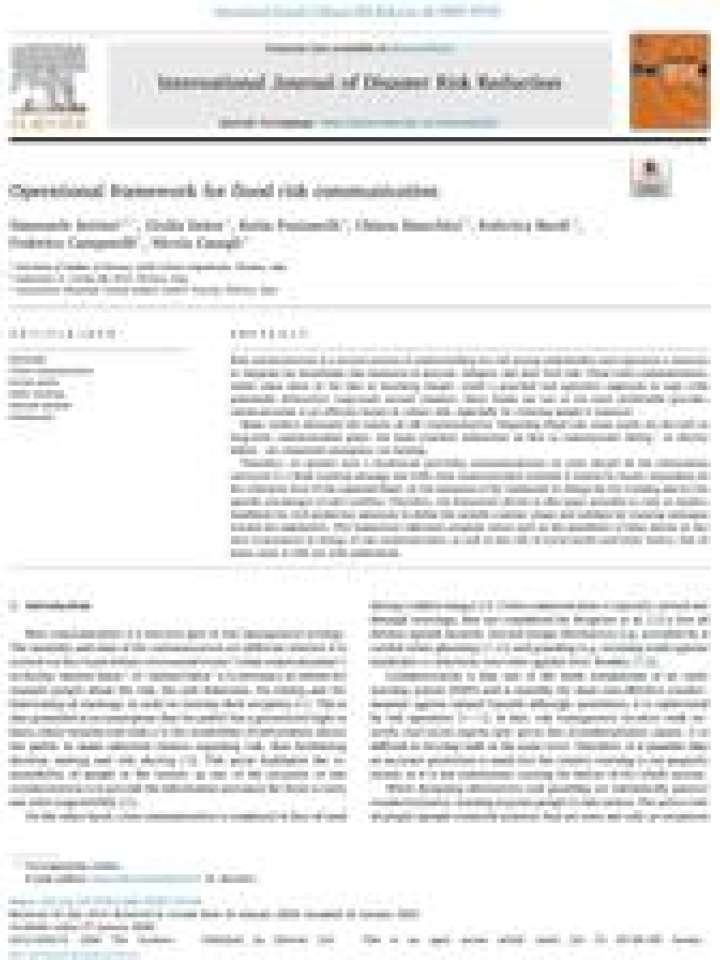Operational framework for flood risk communication
Risk communication is a mutual process of understanding the risk among stakeholders and represents a measure to integrate lay knowledge into measures to prevent, mitigate, and deal with risk. Flood crisis communication, which takes place in the face of incoming danger, needs a practical and operative approach to cope with potentially destructive, large-scale natural disasters. Since floods are one of the most predictable georisks, communication is an efficient means to reduce risk, especially by reducing people's exposure.
Many authors discussed the nature of risk communication. Regarding flood risk, most works are devoted to long-term communication plans, but more practical indications on how to communicate during - or shortly before - an (expected) emergency are lacking.
Therefore, we present here a framework providing recommendations on what should be the information conveyed in a flood warning message and with what communication medium it should be issued, depending on the criticality level of the expected flood, on the resources of the institution in charge for the warning and on the specific advantages of each medium. Therefore, the framework shown in this paper provides an easy to employ handbook for civil protection operators to define the suitable content, shape and medium for warning messages toward the population. This framework addresses common issues such as the possibility of false alarms or the lack of personnel in charge of risk communication, as well as the role of social media (and their limits), that in many cases is still not well understood.
Explore further
